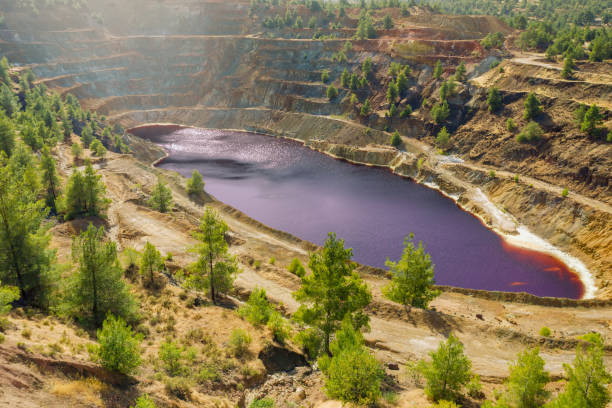India, a land of ancient rivers and lakes, is now facing an escalating water crisis. Once-thriving lakes in cities and villages have turned into dumping grounds, choked with sewage, plastic, and silt. The consequences? Collapsing biodiversity, receding groundwater levels, increased urban flooding, and loss of community resources. But there is hope—lake restoration in India is gaining momentum, transforming dying water bodies into vibrant ecosystems.
Lake rejuvenation is not just about cleaning; it’s about reviving the entire ecological and hydrological cycle. From large metro cities to rural hamlets, India is witnessing a quiet revolution that is bringing life back to its neglected lakes.
🌊 Why Lake Restoration Matters
1. Water Security and Groundwater Recharge
Lakes act as natural reservoirs, replenishing underground aquifers. With groundwater tables plummeting across India, restoring lakes is critical to ensure long-term water availability for drinking, irrigation, and industry.
2. Flood Mitigation
Urban flooding is worsening due to encroachment on lakes and wetlands. Healthy lakes act as buffers during heavy rains, absorbing excess water and preventing flash floods—especially in monsoon-prone areas.
3. Biodiversity Hotspots
Lakes are home to aquatic plants, birds, fish, amphibians, and micro-organisms. Restoring them boosts urban biodiversity and brings back natural food chains. This aligns with other initiatives like urban forests and mangrove ecosystems that aim to restore biodiversity in stressed habitats.
4. Climate Resilience
Water bodies cool surrounding areas through evaporation and play a role in regulating local microclimates. Restored lakes can mitigate heat island effects in cities and help fight climate change—similar to the impacts seen in Miyawaki urban forests.
🧭 Steps in Lake Restoration
Reviving a lake requires a multidisciplinary, long-term approach. Key steps include:
1. Mapping and Demarcation
Officially identifying and protecting the lake’s boundaries to prevent further encroachment and illegal construction.
2. Desilting and Dredging
Removing sludge and plastic waste to increase water-holding capacity and improve water quality.
3. Sewage Treatment
Installing decentralized sewage treatment plants (STPs) to stop untreated wastewater from flowing into the lake.
4. Catchment Area Treatment
Reforestation and planting in surrounding areas—often involving tree plantation projects—to prevent soil erosion and siltation.
5. Creating Wetlands and Biofilters
Constructed wetlands act as natural filters, purifying water before it enters the lake.
6. Community Engagement
Empowering local residents, schools, and NGOs to maintain the lake, plant native species, and ensure sustainability.
🏞️ Successful Lake Restoration Projects in India
🌿 Kaikondrahalli Lake – Bengaluru
Once a dying lake, Kaikondrahalli has been transformed through community effort and ecological planning. The restored lake now attracts over 50 species of birds, features a walking trail, and supports groundwater recharge for nearby areas.
🌿 Sukhna Lake – Chandigarh
One of India’s most iconic lakes, Sukhna underwent desilting and wetland restoration to protect its catchment from siltation caused by deforestation. Planting efforts similar to rural forestry helped stabilize soil and reduce erosion.
🌿 Kukkarahalli Lake – Mysuru
An urban lake revived with the help of citizen groups and ecologists. Efforts included native tree planting, improved waste management, and creation of aquatic habitats.
🌿 Puttenahalli Lake – JP Nagar, Bengaluru
An excellent example of how volunteer-driven models can sustain lakes. The Puttenahalli Neighbourhood Lake Improvement Trust (PNLIT) maintains the lake with support from locals and authorities, showing how community forestry and water restoration go hand in hand.
🌿 Lake Restoration + Urban Forestry = Synergy
Lake rejuvenation isn’t just about water—it’s also about restoring the surrounding ecology. Planting native trees around lakes increases shade, reduces evaporation, and provides habitats. Integrating restoration efforts with urban forestry and agroforestry models can greatly enhance impact.
🥬 The Role of Food Forests Near Lakes
Some Indian communities are combining food forests with lake restoration. These food forests include fruit trees, herbs, and shrubs, offering food security and economic opportunities while improving the ecosystem.
By mimicking forest layers, food forests help:
- Prevent soil erosion around lake banks
- Improve water retention
- Support pollinators and birds
- Offer nutritional and medicinal value to communities
This multi-functional model is increasingly seen as a scalable solution for rural lakefront development.
🏖️ Coastal Lake and Beach Forest Synergy
In coastal regions, lake restoration often merges with beach cleaning and mangrove afforestation. These efforts not only protect the shoreline from erosion and storm surges but also help reestablish freshwater-saltwater equilibrium, essential for coastal biodiversity.
❓ FAQs: Lake Restoration in India
Q1. How long does lake restoration take?
It depends on the lake’s size and degradation level. Most projects show visible improvements within 6–18 months, but ecological balance can take several years.
Q2. Who is responsible for lake restoration?
Primarily local municipal bodies, state pollution control boards, and forest departments. Increasingly, citizen groups and NGOs are taking leadership roles.
Q3. Can restored lakes support fisheries and livelihoods?
Yes. Once water quality improves, lakes can support controlled fish farming, lotus cultivation, and recreational activities—boosting local rural economies.
Q4. Are artificial lakes worth restoring?
Absolutely. Even man-made lakes play critical roles in urban hydrology and ecology. Restoration can transform them into biodiversity hotspots and water reservoirs.
Q5. How can I contribute to a local lake’s revival?
Start by forming or joining a local lake conservation group. Collaborate with authorities, attend clean-up drives, and spread awareness about water conservation and native tree planting.
🔗 Internal Resource Hub
Explore more about India’s green and blue ecosystem revival movements:
- Lake Restoration in India
- Agroforestry in India
- Food Forests in India
- India’s Urban Forest Revolution
- Tree Plantation in India
- Mangroves in Maharashtra
- NGO for Beach Cleaning in India
🌍 Conclusion: A Ripple Effect for Sustainability
Restoring lakes in India is more than a technical fix—it is an ecological, social, and spiritual renaissance. These rejuvenated water bodies serve as climate buffers, biodiversity hubs, and community spaces. By integrating lake restoration with urban forestry, food forests, and coastal conservation, India is laying the foundation for a sustainable, water-secure future.
The ripple effect of lake restoration goes far beyond water—it rejuvenates life itself.
